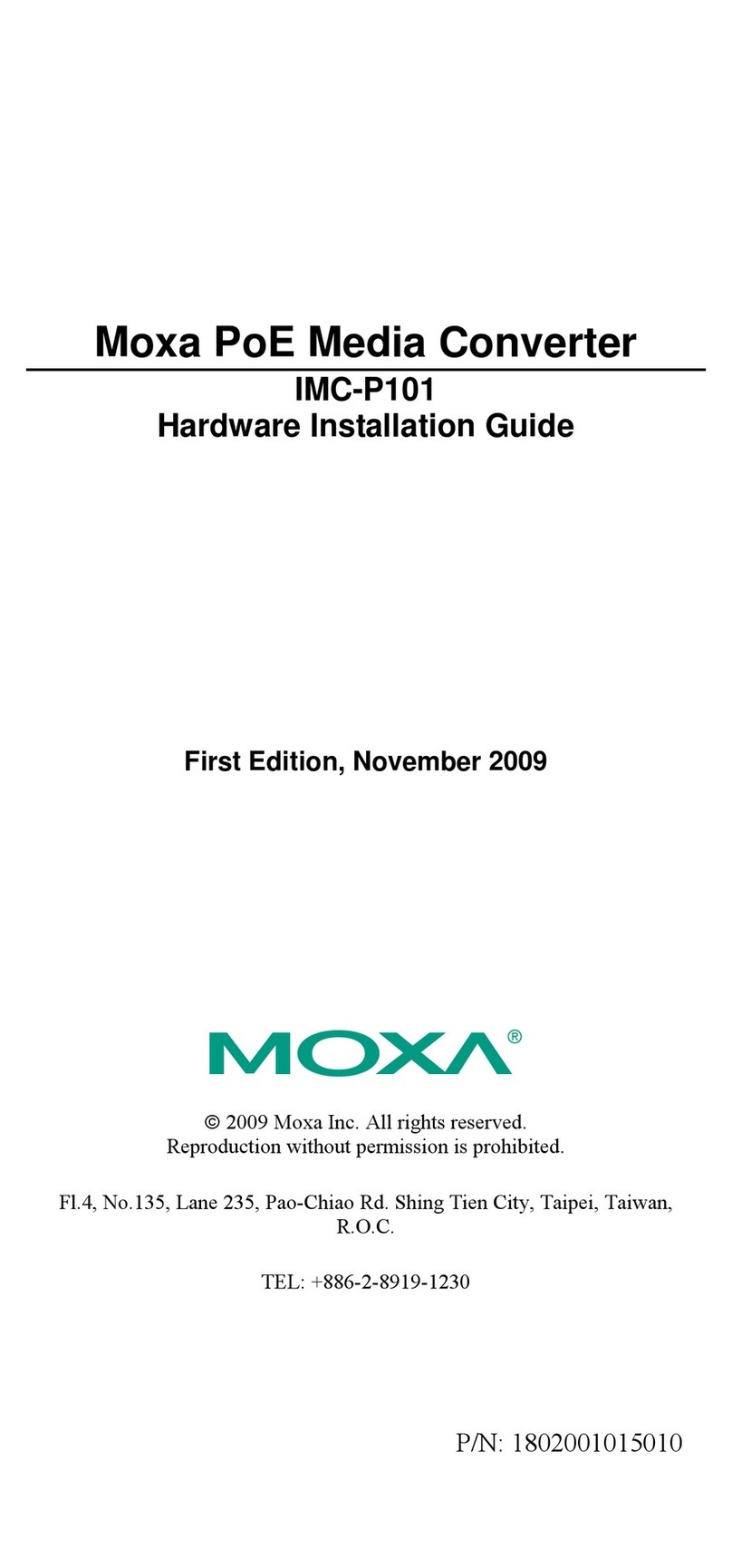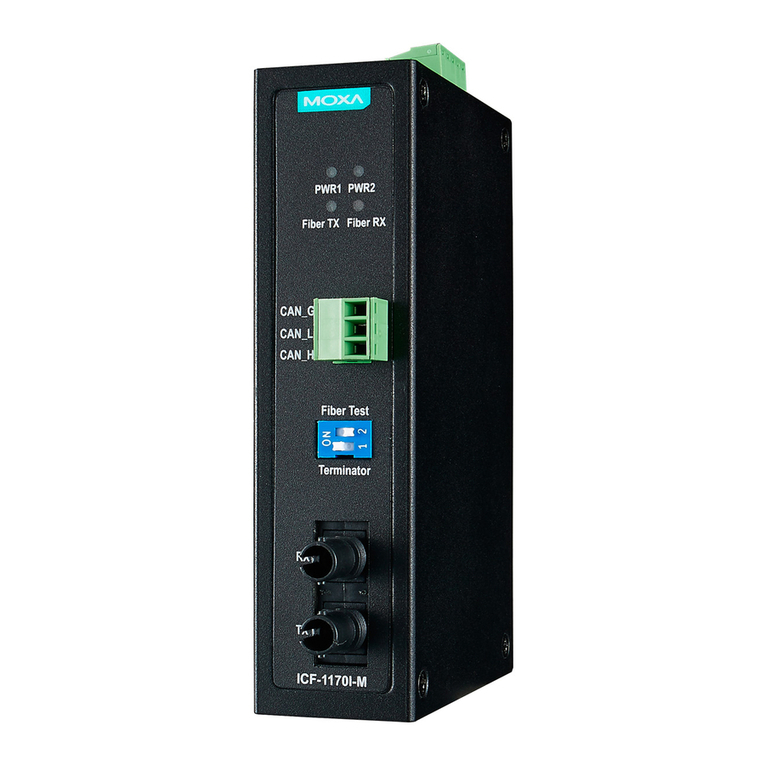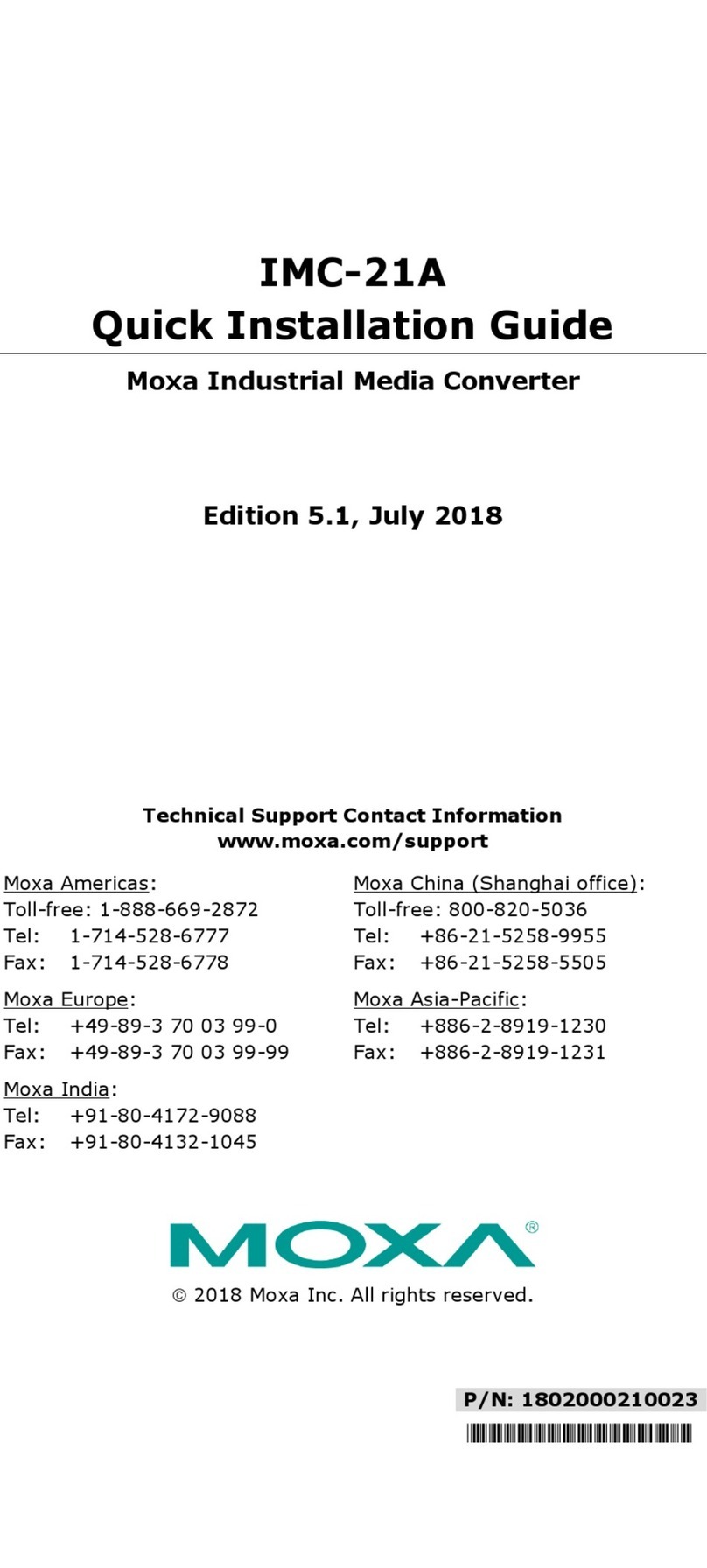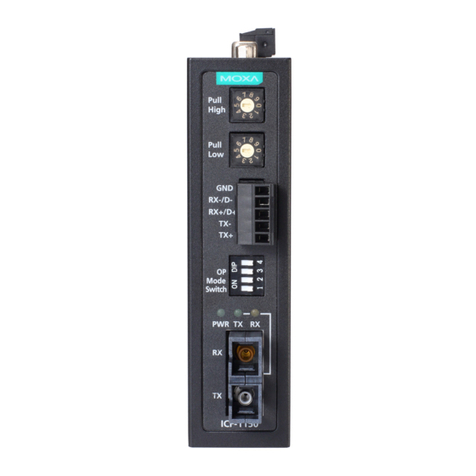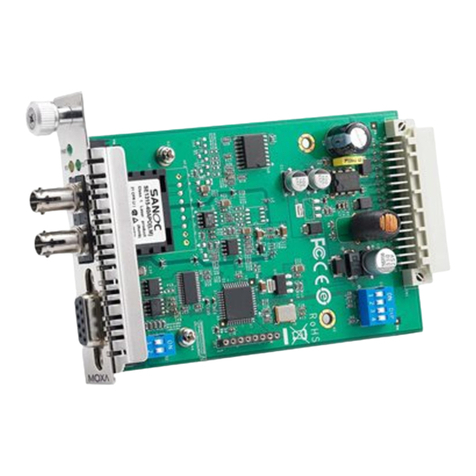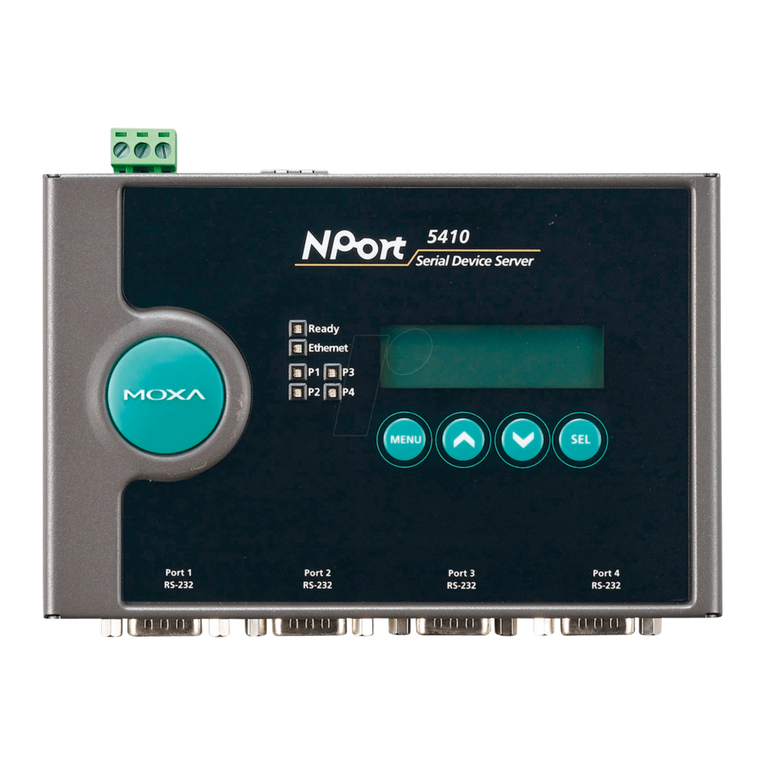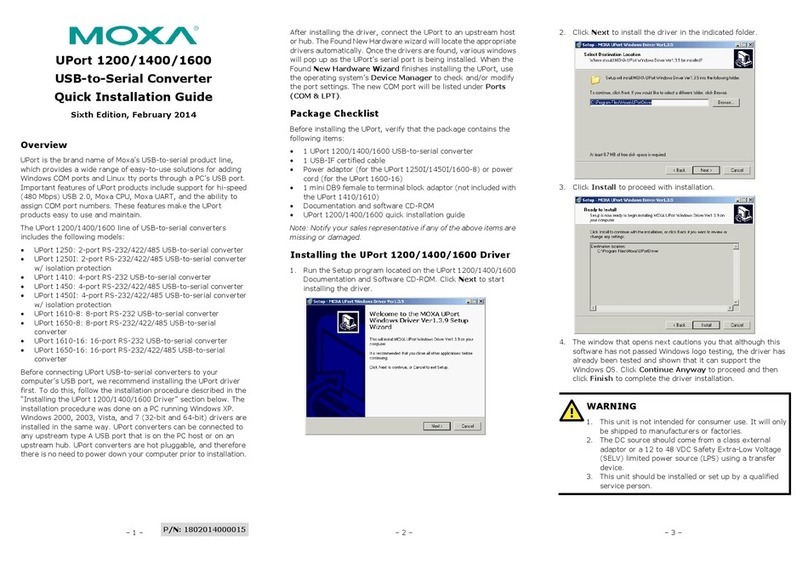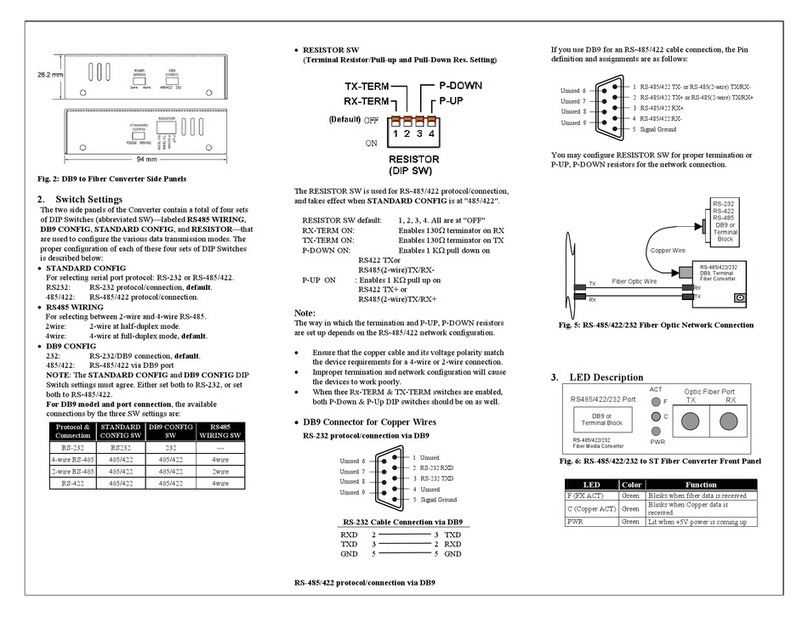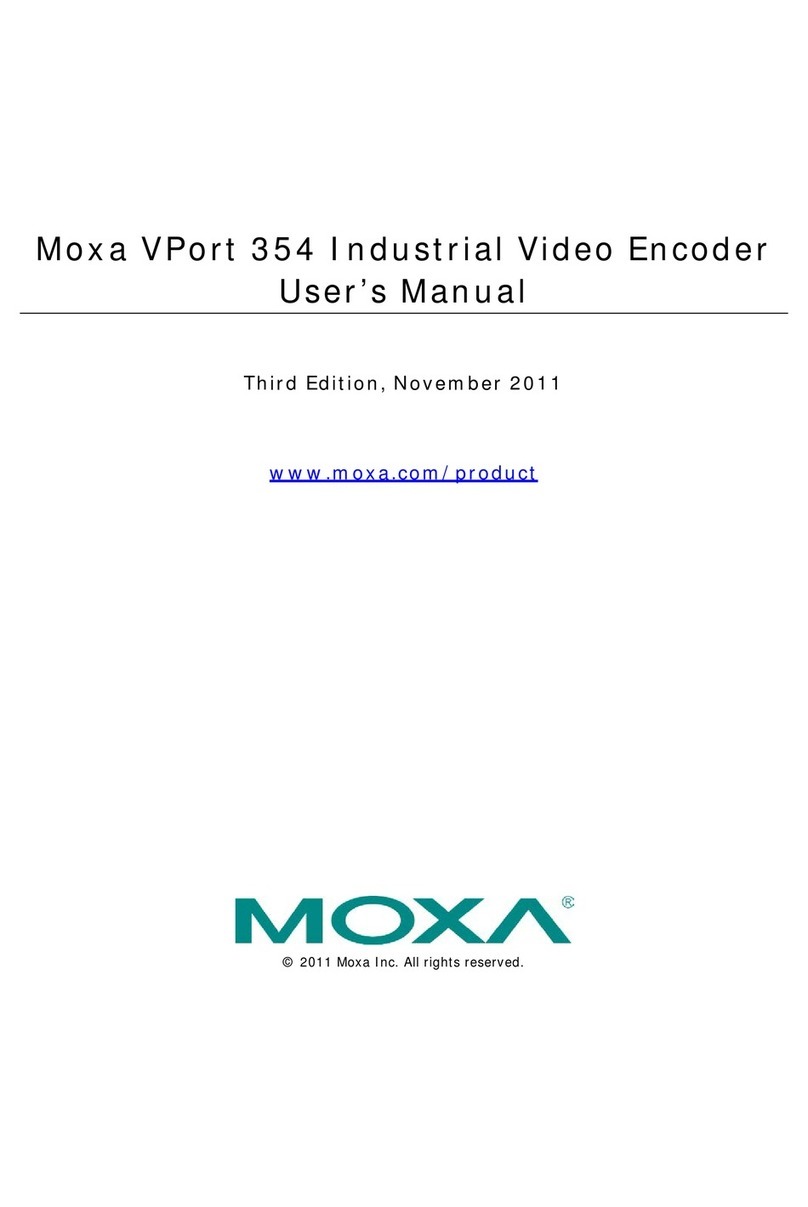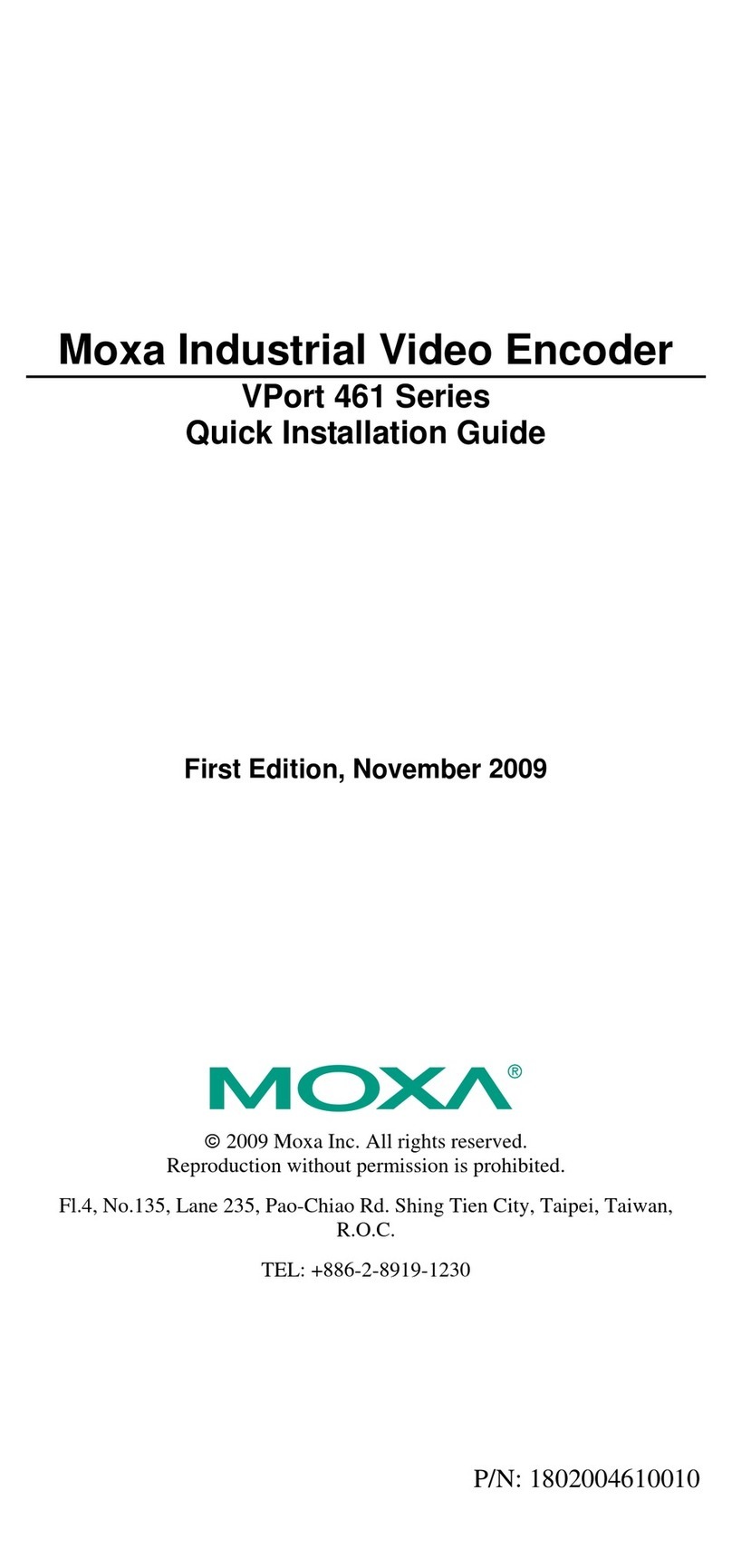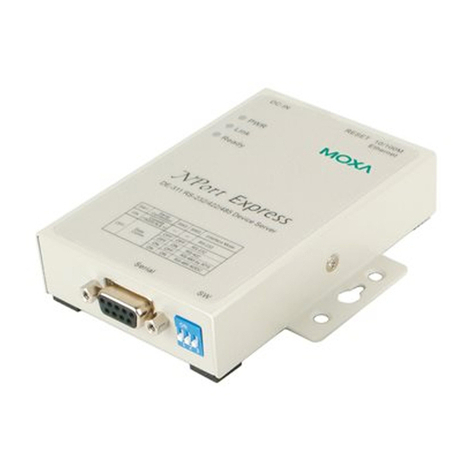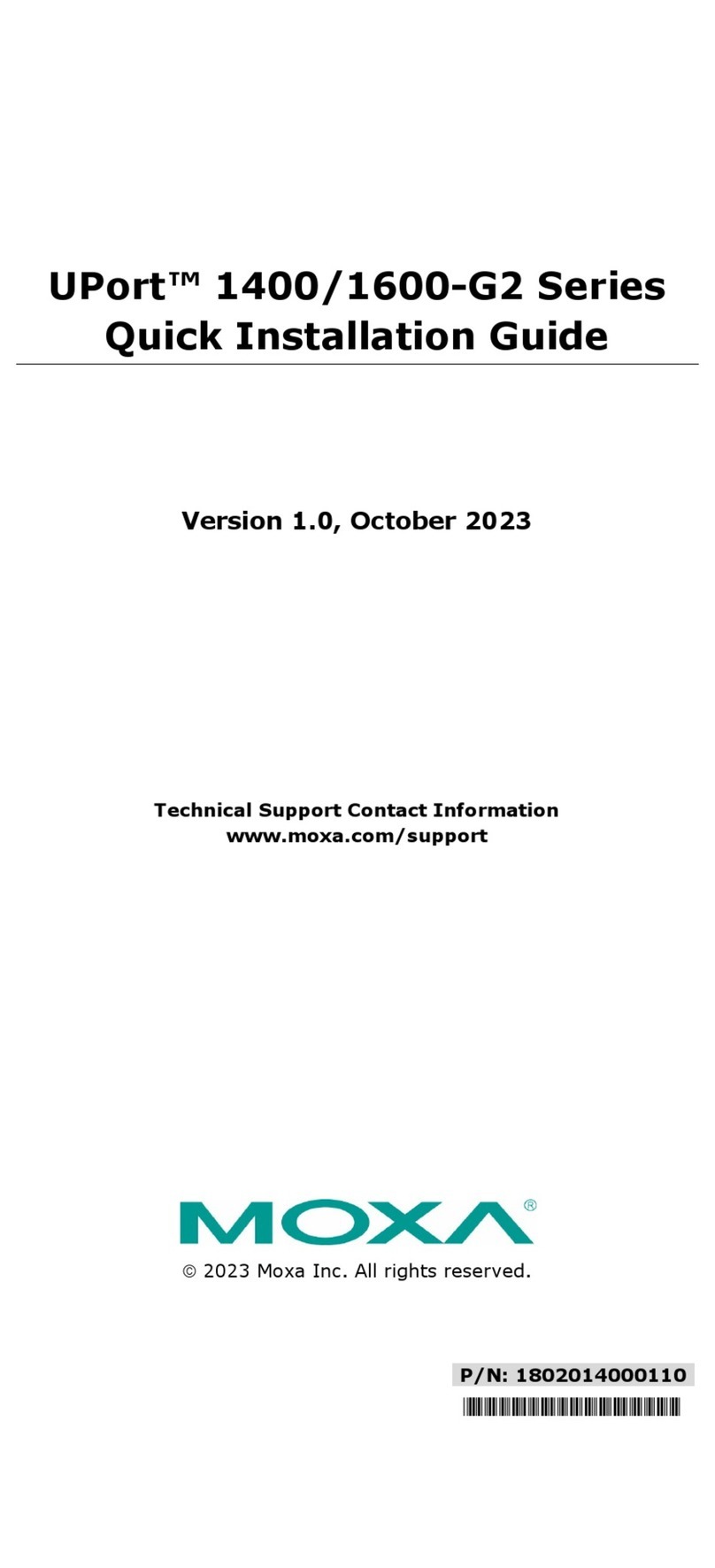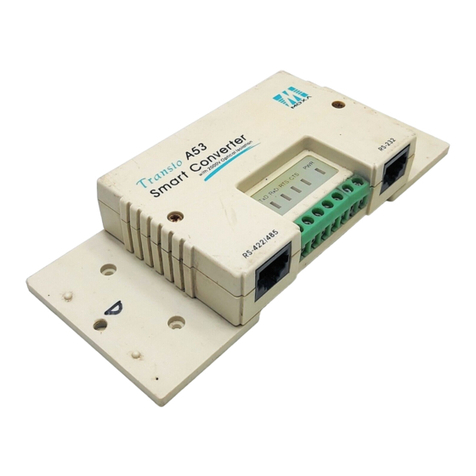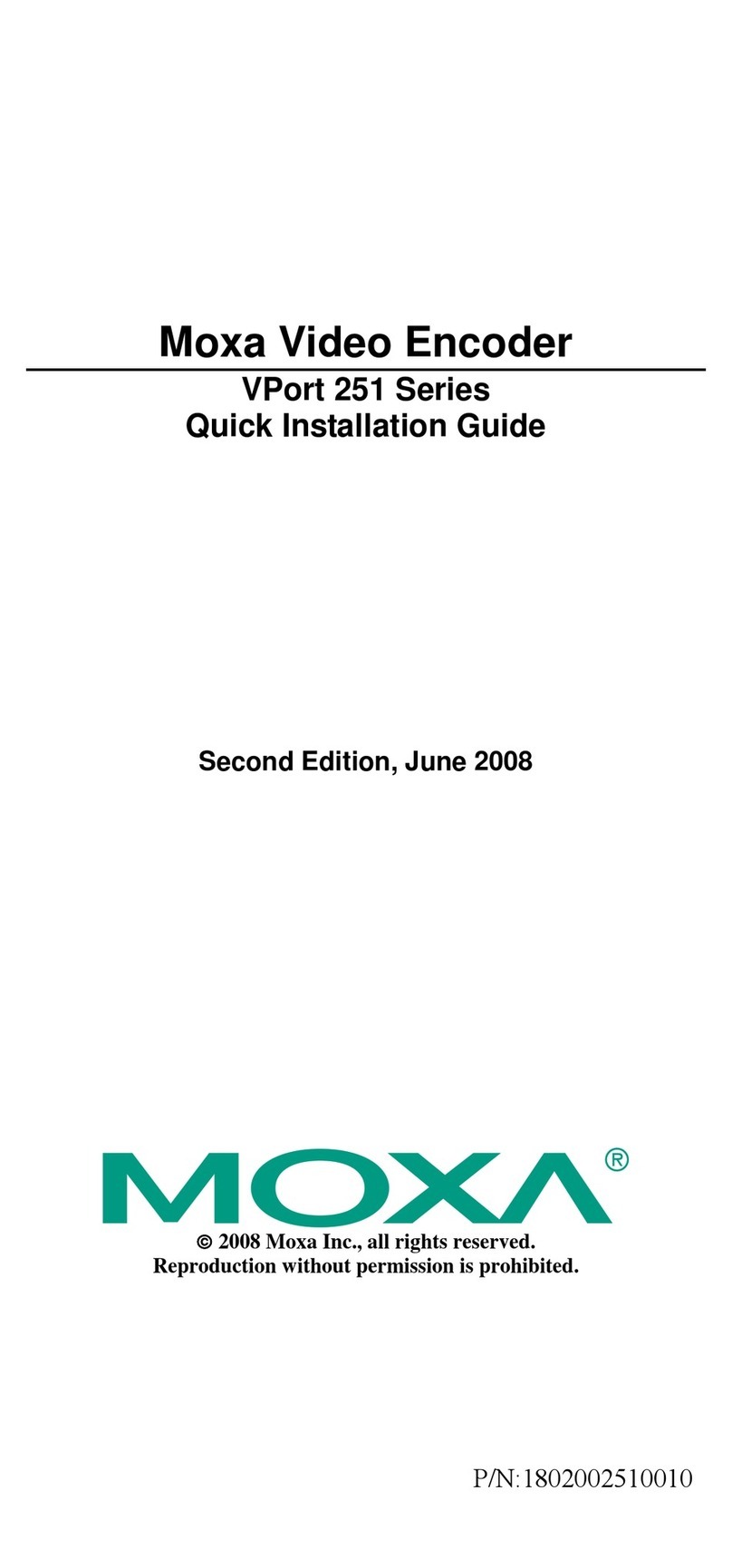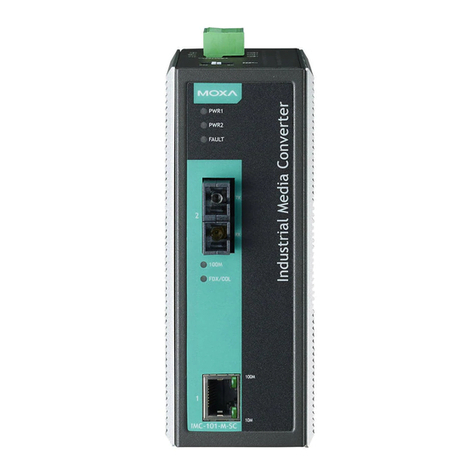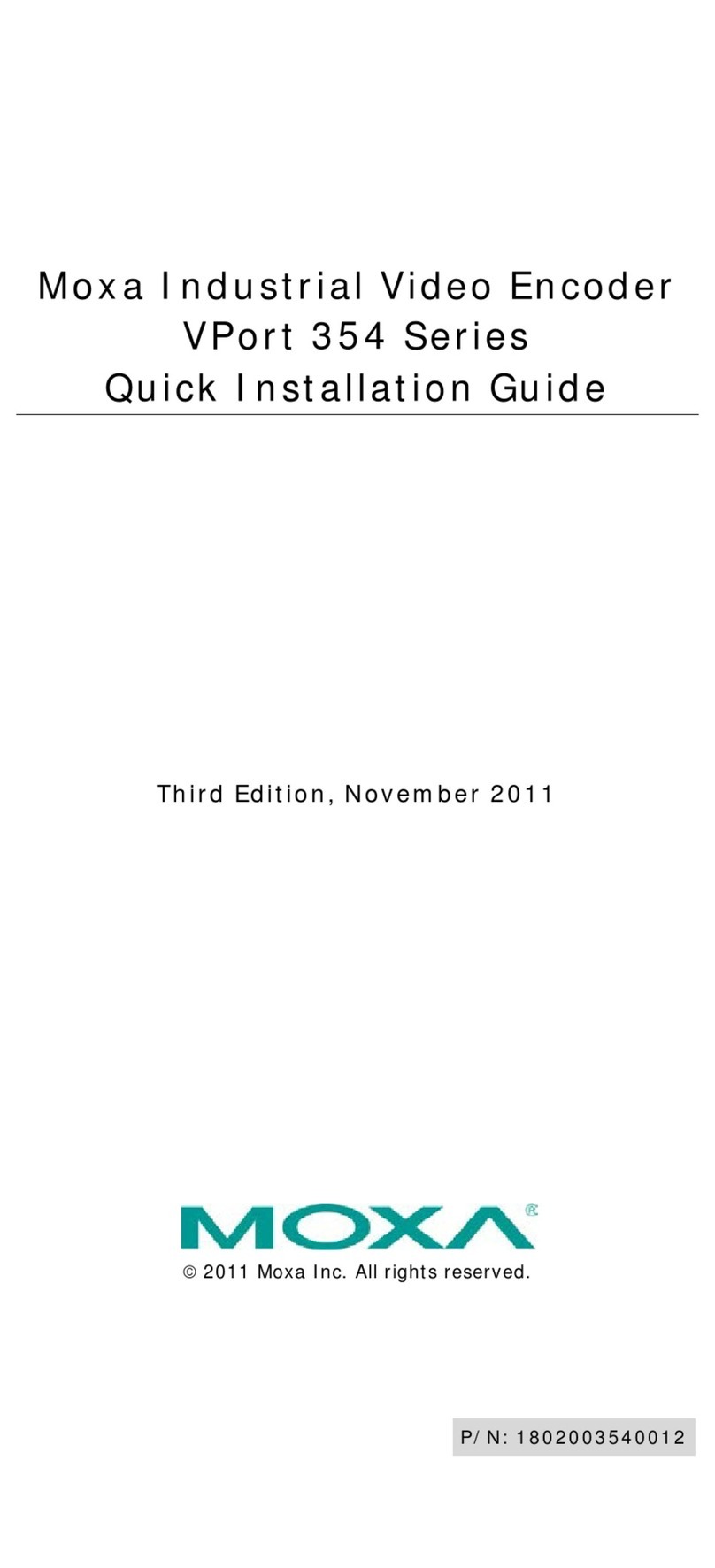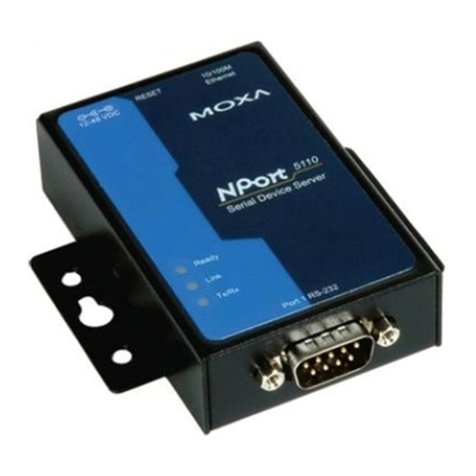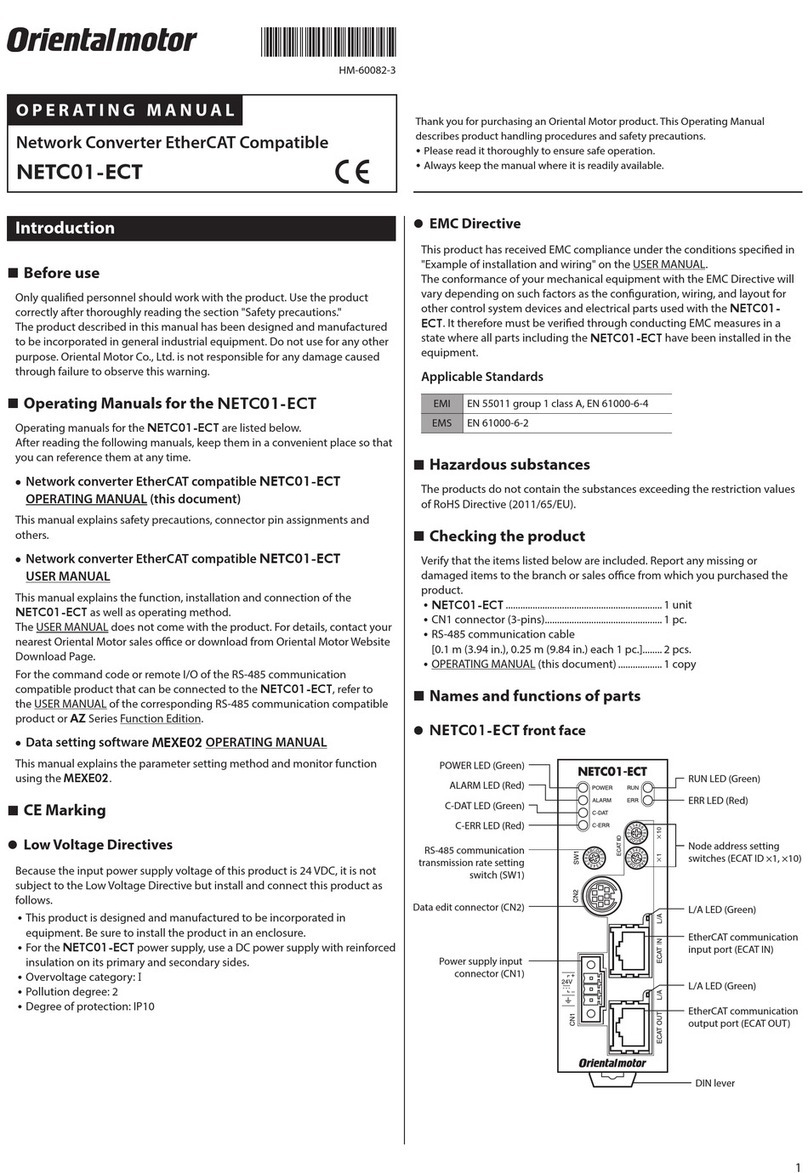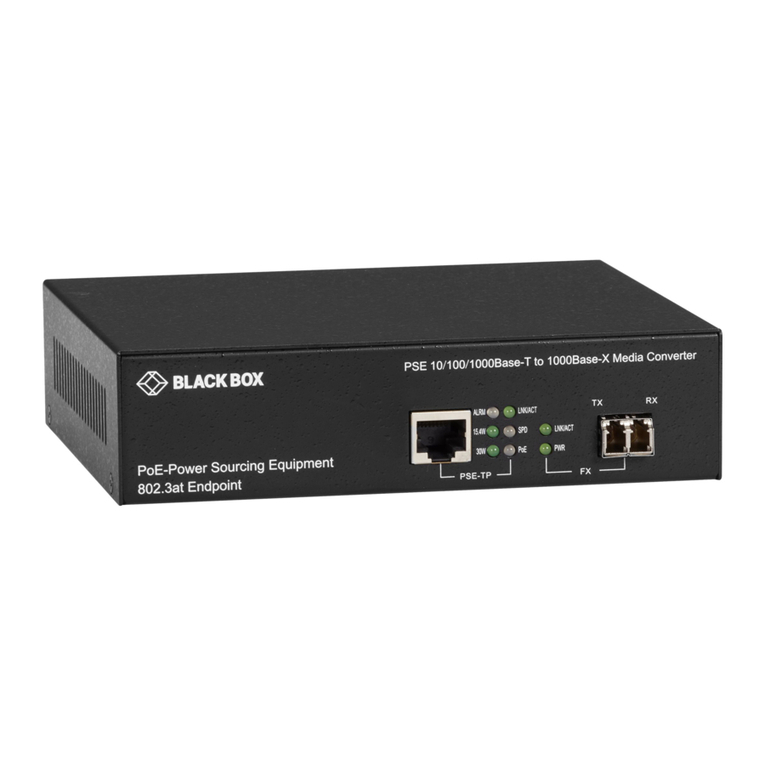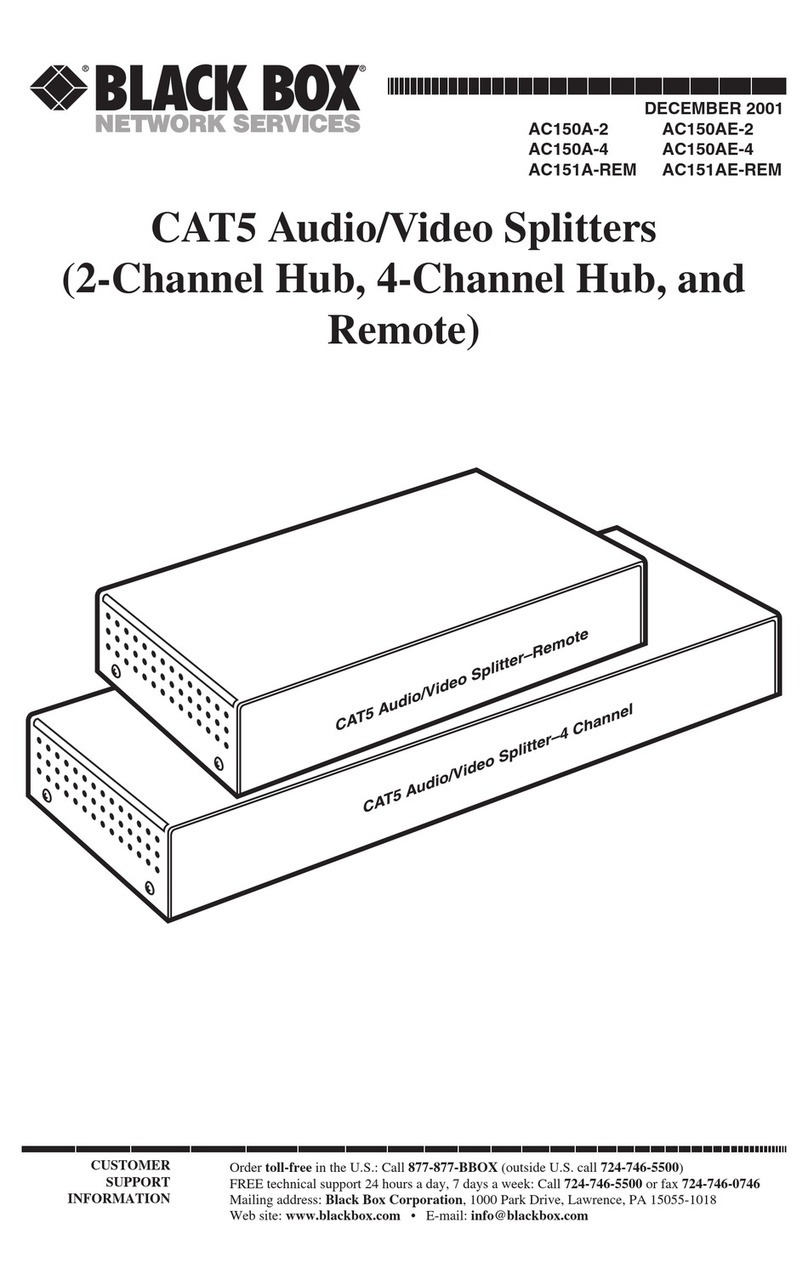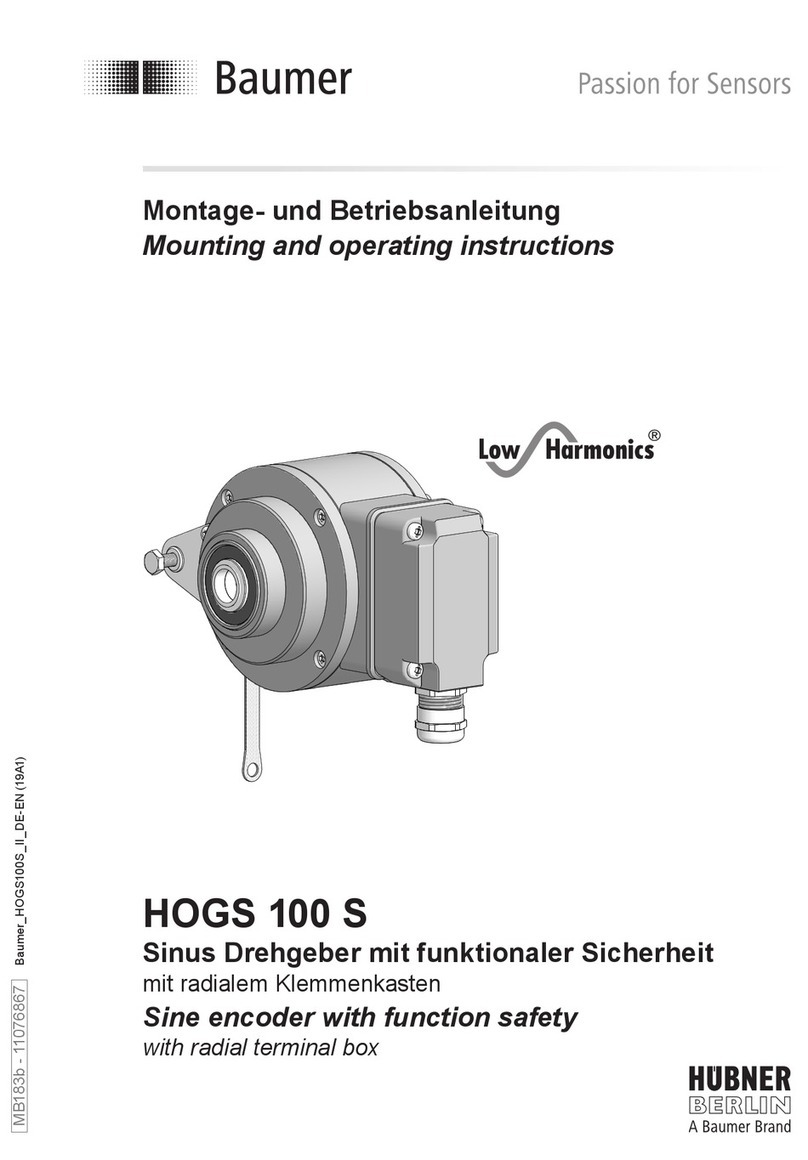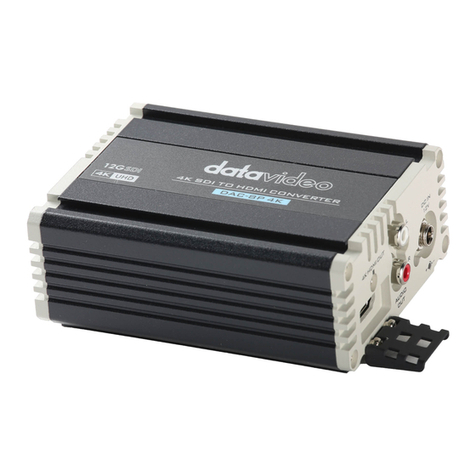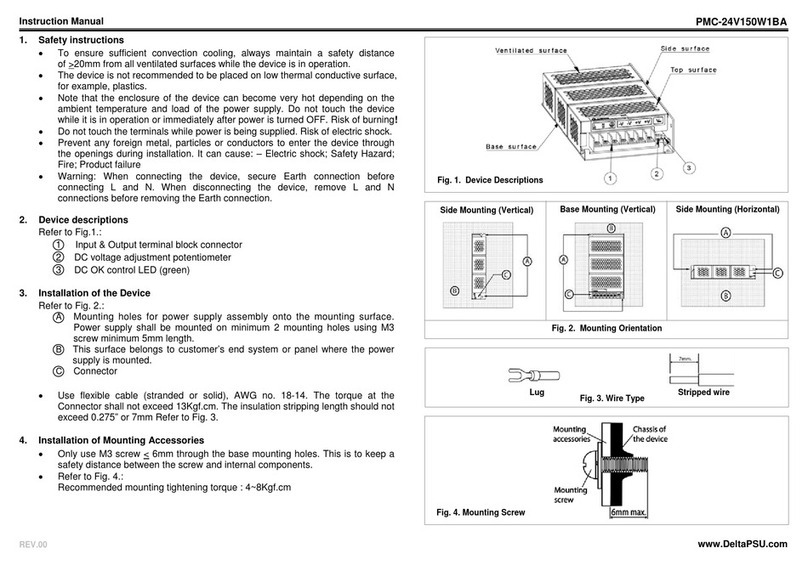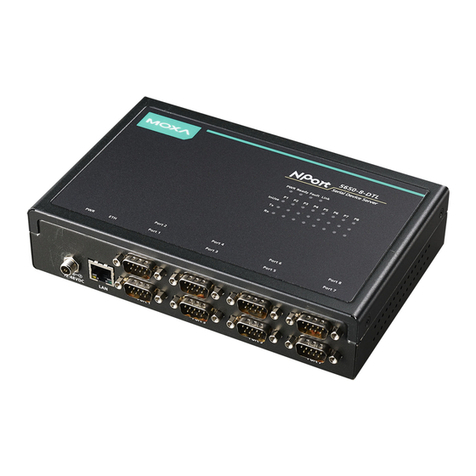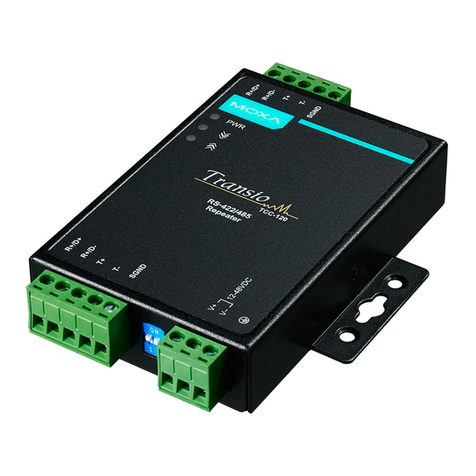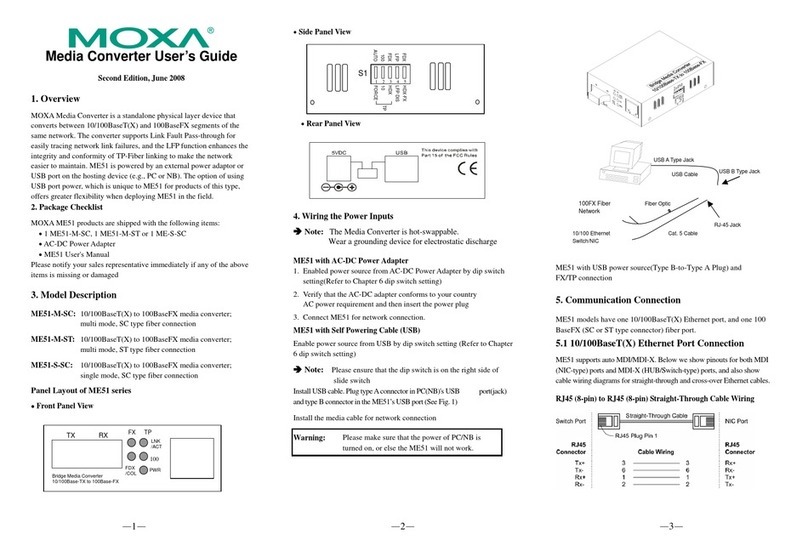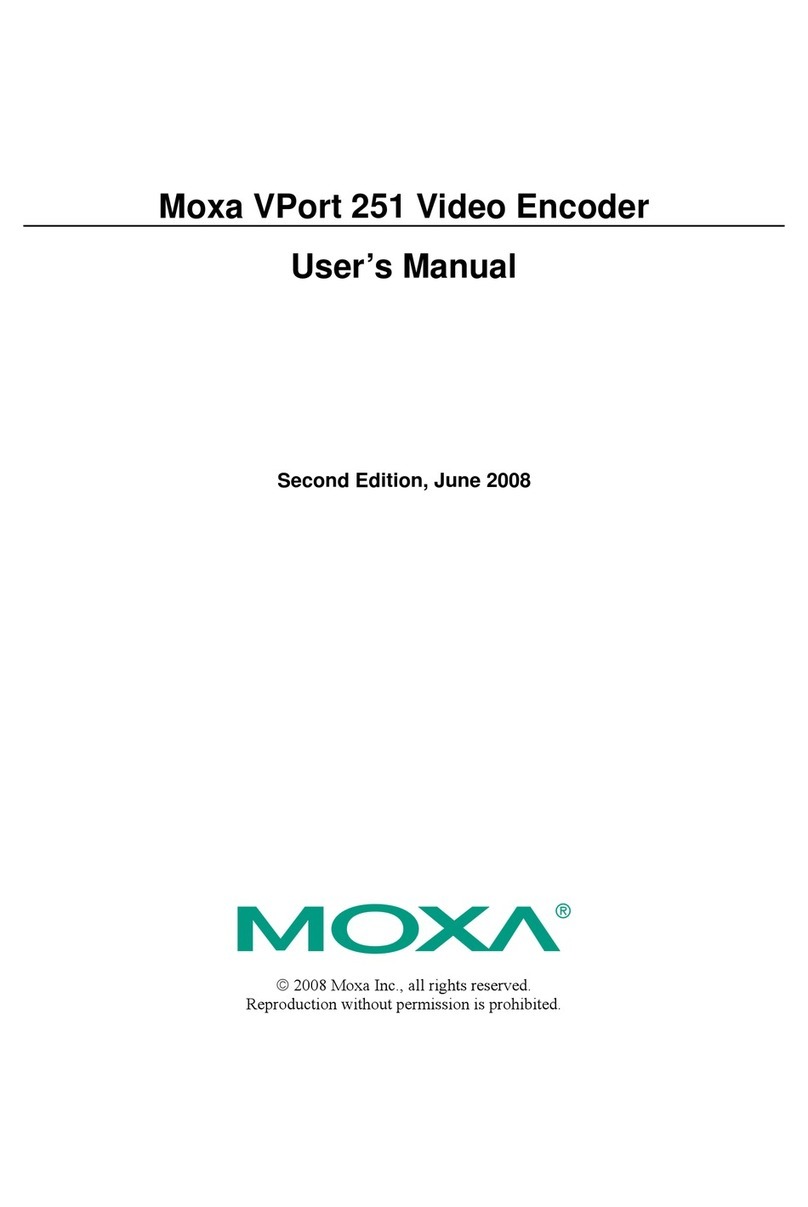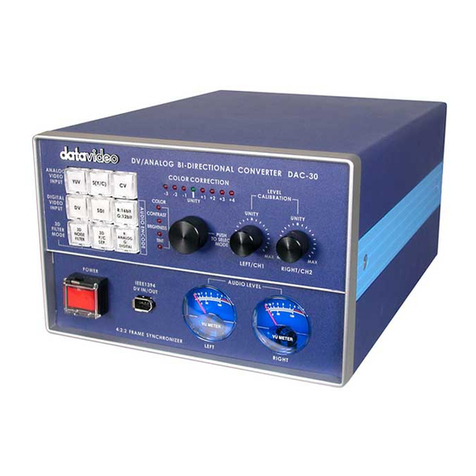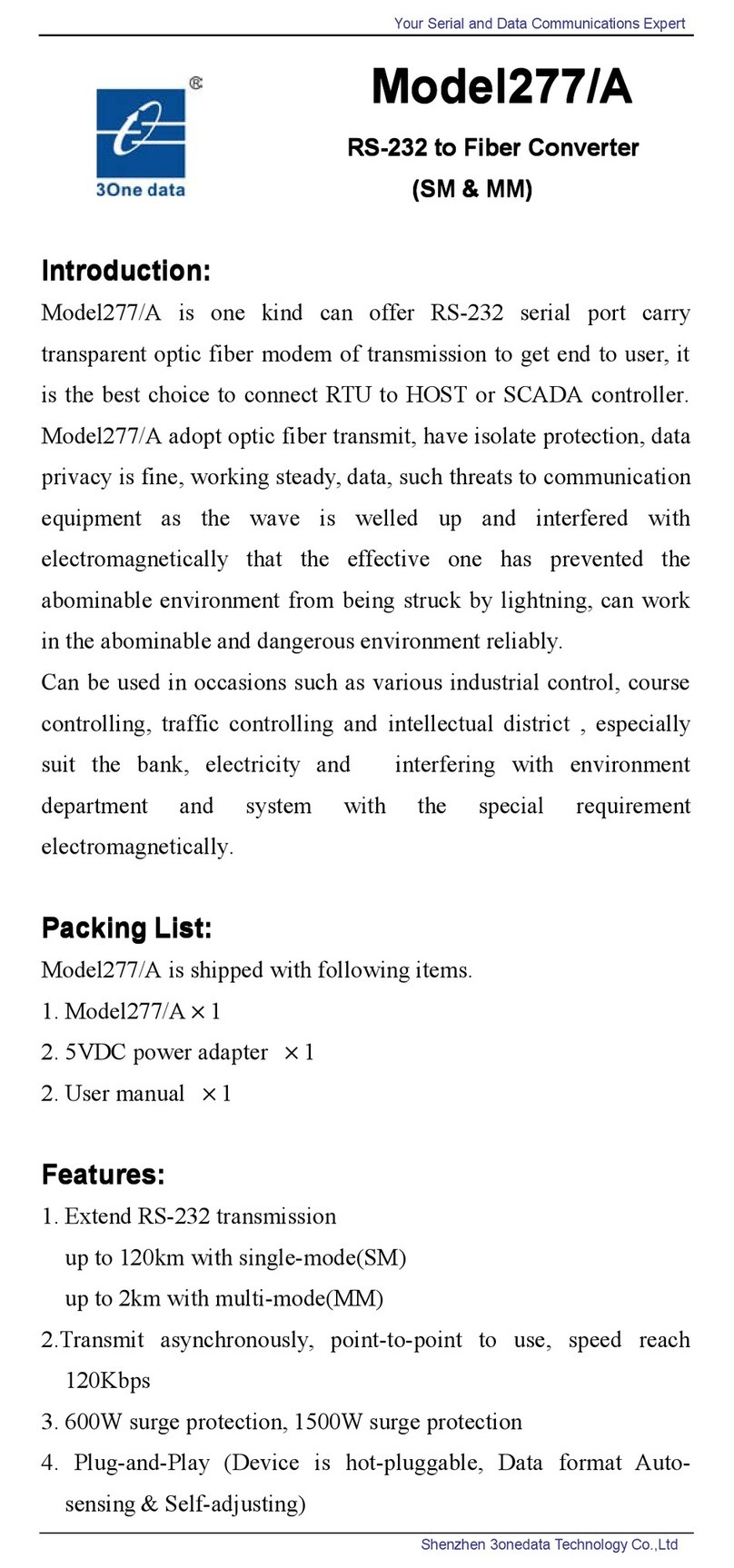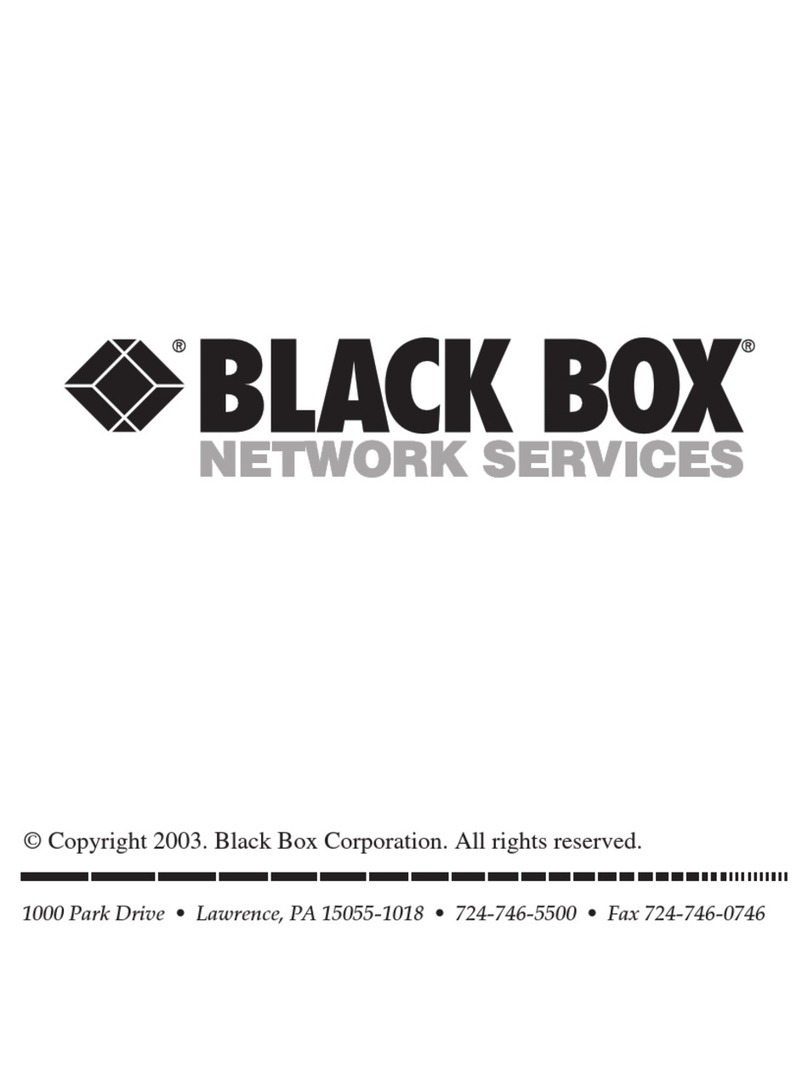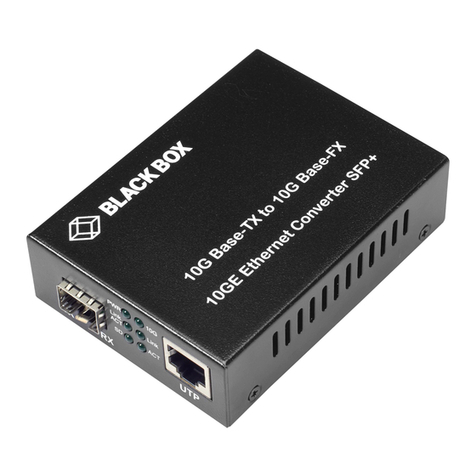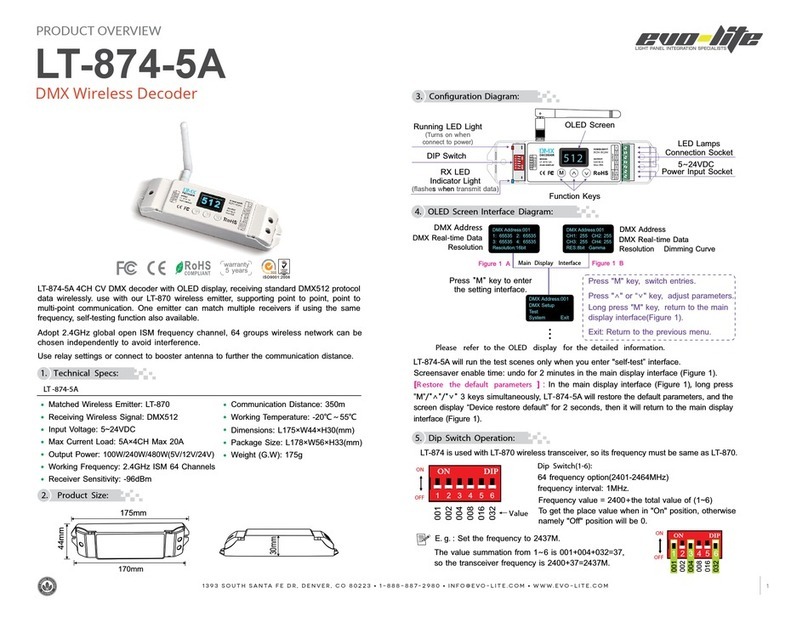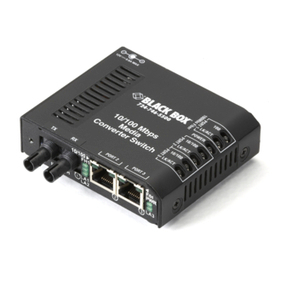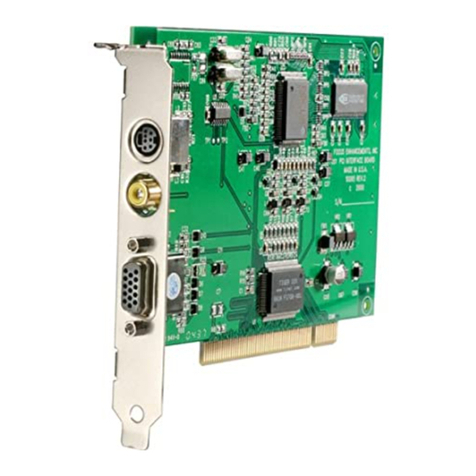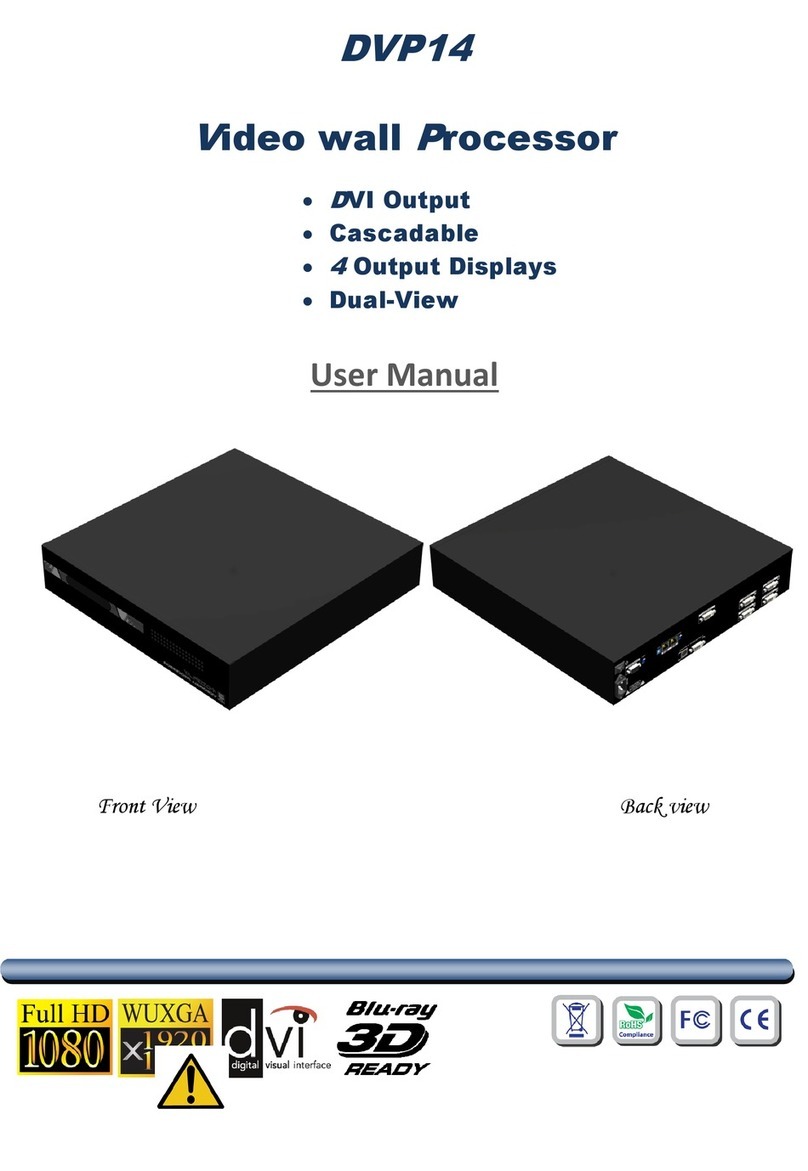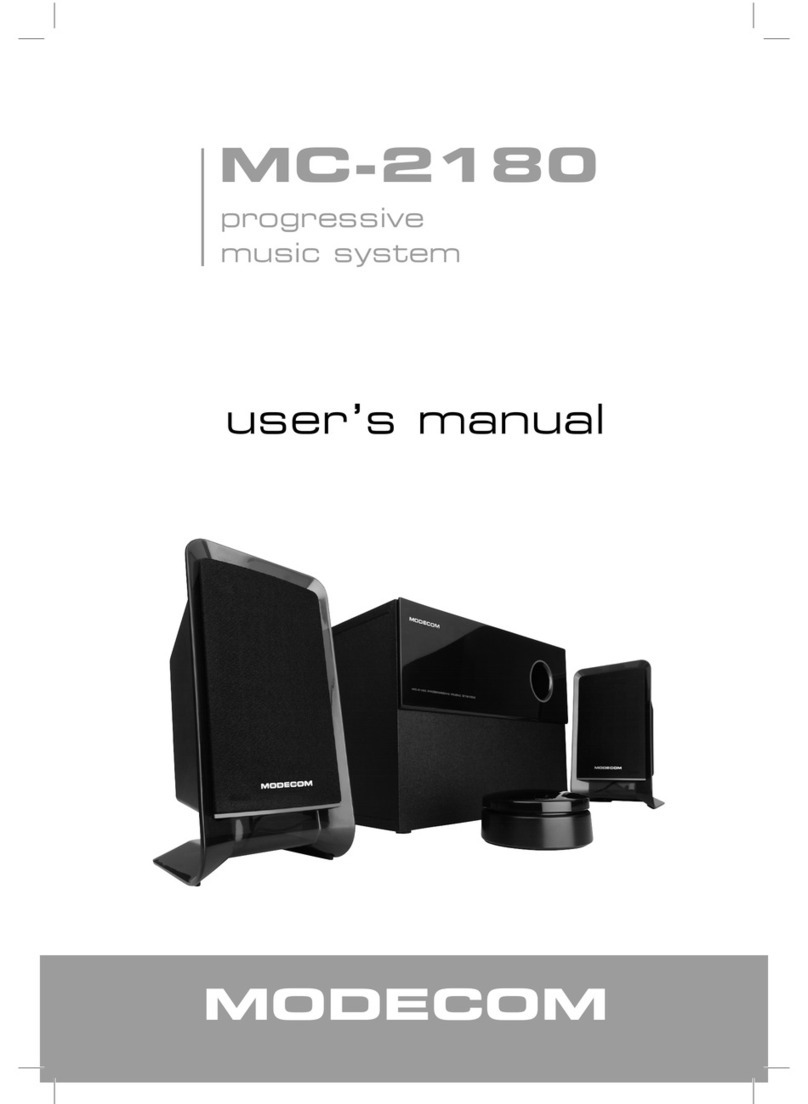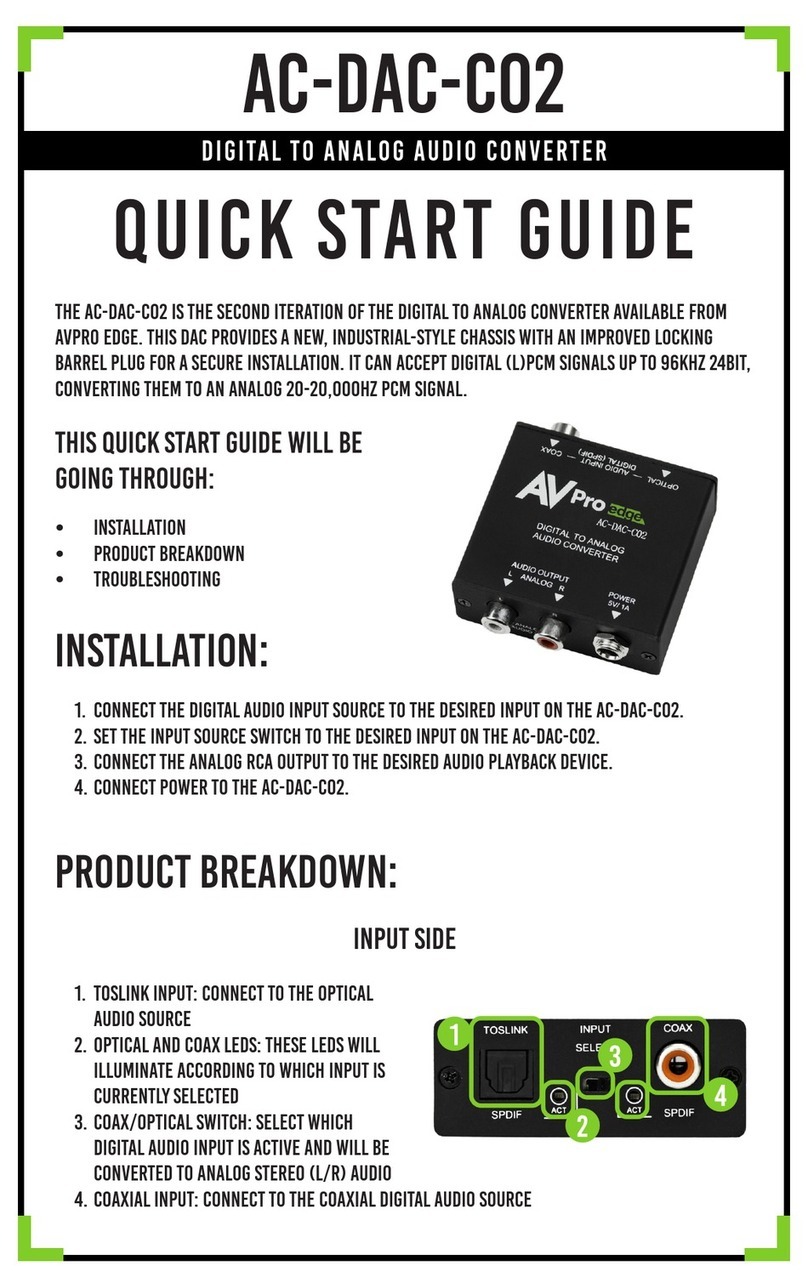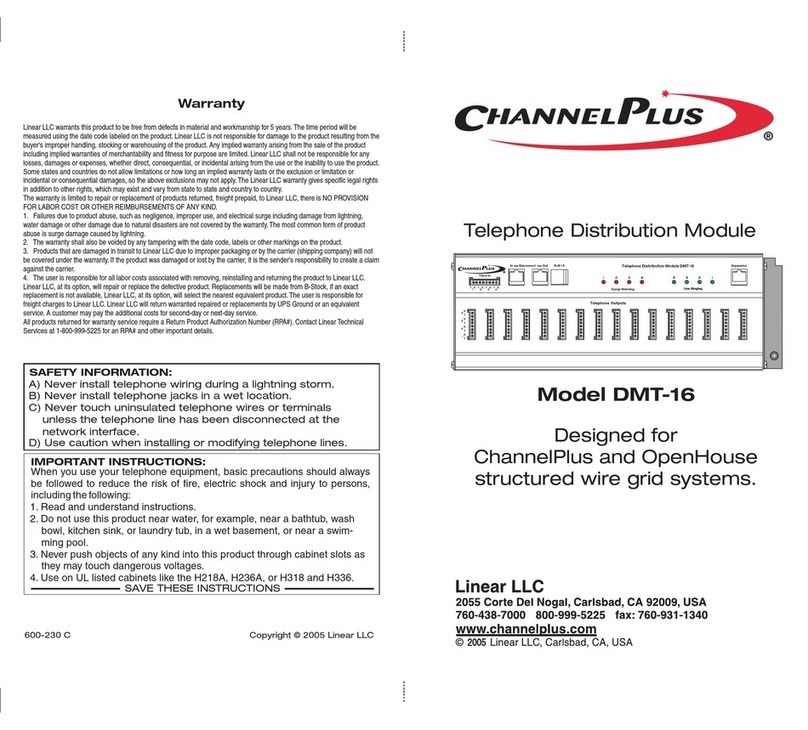Transio TCC-80/80-DB9 User’s Manual Transio TCC-80/80-DB9 User’s Manual
Installation
RS-232 Serial Port Power
The RS-232 port of the TCC-80 is designed with a
female DB9 socket for connecting directly to the
host PC, with power drawn from the TxD, RTS, or
DTR lines. Regardless of whether the signal is high
or low, the TCC-80 is still able to obtain enough
power from the three data/handshake lines. For
applications that do not use the handshake lines, a
DC jack is provided for connecting a 5 to 12 VDC
power supply through a USB power cord or
external power adaptor.
D
X
T
S
TR
R
T
D
a
t
a
D
/
ecr
uo
S
r
e
w
oP
la
ire
S
58
4
/
2
2
4
-
S
Rs
ec
i
ve
D
Port Power Dissipation
When installing an RS-232 port-powered TCC-80
converter, pay attention to the power consumption,
RS-232 cable length, power provided by the serial
port, and the RS-422/485 transmission distance. In
general, the TCC-80 itself derives 50 mW from the
power source; a standard COM port on a host PC
can provide 70 to 90 mW of power if the TxD, RTS,
and DTR lines are connected. Moreover, the
RS-232 cable length should be shorter than 15 m
(@ 9600 bps) to ensure that less power is lost when
making the trip from the host/device to the TCC-80.
The rest of the supplied power is used for
transmitting the RS-422/485 signal.
Optional External Power
Termination is a critical requirement for port-power
devices such as the TCC-80. In most circumstances,
termination resistors are used when the RS-422/485
cable length is longer than 100 m. Regardless of
how much the data signal is dissipated, the
termination resistors absorb more than 75 mW of
power from the power source when TCC-80 is
unable to use the limited serial power. In other
words, if long distance RS-422/485 transmission or
termination is required, then an external USB power
cord or DC power supply should be used (in this
case, DIP SW3 must be ON).
D
XT
a
taD
dr
o
C
rew
oP
tr
oP
BS
U
/
e
g
n
a
R
g
n
o
Ld
et
a
ni
m
e
T584
/
22
4-
S
Rn
o
ii
tc
e
n
n
o
C
/
e
g
n
a
R
g
n
o
Ld
et
a
ni
m
e
T584
/
22
4-
S
Rn
o
ii
tc
e
n
n
o
C
D
XT
S
T
R
RT
D
ro
t
pa
d
Ar
e
w
o
P.
t
xE
C
D
V
2
1
ot
5
a
t
aD
Baud rate
(bps) RS-422/485
Transmit
Distance (m)
Embedded
Terminator RTS/DTR or
Ext. Power
Required
9600 1200
(ON) 120 ΩNO
19200 1200
(ON) 120 ΩNO
38400 600
(ON) 120 ΩNO
57600 300
(ON) 120 ΩNO
115200 150
(ON) 120 ΩNO
Serial Port Power Compatibility
Different kinds of serial ports use different interface
chips, and provide different power levels. In fact,
some ports will not provide enough power to
activate the TCC-80.
You will seldom encounter problems with a PC’s
onboard COM1 and COM2 ports. Refer to the
following table for add-on cards and
serial-to-Ethernet device server that are guaranteed
to provide sufficient power.
Multiport Serial BoardsSerial Device Servers
Moxa Boards
CP-168U Series
CP-104U Series
CP-102U Series
C168H Series
C104H Series
Moxa NPort Servers
CN2510
CN2610
NPort 5110
NPort 5210
NPort 5410
NPort 5610
NPort 6150
NPort 6250
NPort 6450
NPort 6650
Switch and Jumper Settings
To change the operation mode, check the back
panel for the DIP Switch settings, as shown below:
321
N
O
DIP Switch Settings
SW1 SW2 SW3RS-422 with
Terminator OFF OFF ON
SW1 SW2 SW3
RS-422 OFF OFF OFF
SW1 SW2 SW34-wire RS-485 with
Terminator ON OFF ON
SW1 SW2 SW3
4-wire RS-485 ON OFF OFF
SW1 SW2 SW32-wire RS-485 with
Terminator ON ON ON
SW1 SW2 SW3
2-wire RS-485 ON ON OFF
DIP switches SW1 and SW2 are used to select the
operation modes (RS-422, or 4W or 2W RS-485).
The termination is controlled by DIP switch SW3.
External Power Supply
The TCC-80 can be connected to a standard 5 to 12
VDC power adaptor if additional external power is
required.
RS-232 Pinouts
The female DB9 port for the RS-232 signal is
shown in the following figure.
543 12
9687
PIN RS-232
1 DCD
2 TxD
3 RxD
4 DSR
5 GND
6 DTR
7 CTS
8 RTS
Note: The RTS and CTS pins are shorted, and
the DTR, DSR, and DCD pins are shorted,
so that users do not need to worry about
hardware flow control cable wiring.
shorted
shorted
